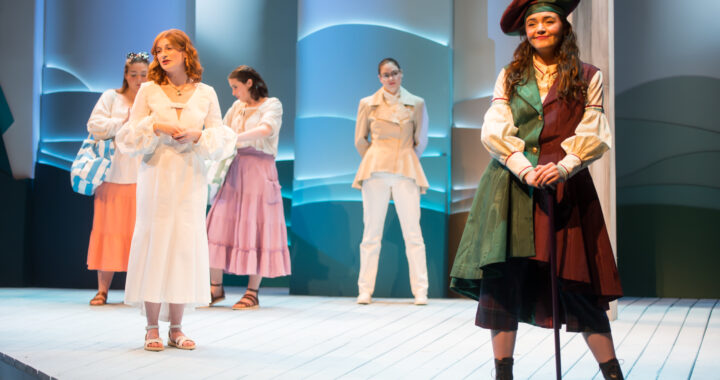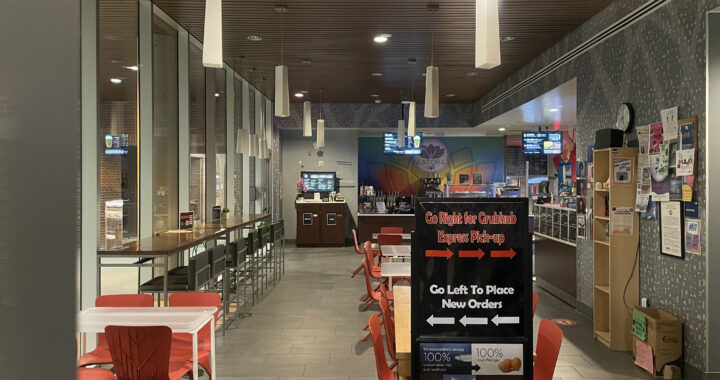Bullet flash back
5 min readIn 1971, two years prior to Roe v. Wade, students at Mary Washington College had one place to go when they were pregnant and scared: the student newspaper office.
“I can’t tell you how many students got illegal abortions,” said Jane Touzalin, editor-in-chief of the Mary Washington Bullet in 1970 and 1971. “People would come to the Bullet office when they were pregnant for advice and support. We had the contact information for a doctor who performed secret abortions.”
Besides being an underground haven, the Bullet of the early 1970s was radical forum for a liberal minority on a conservative and traditional campus. With hand-drawn political cartoons, satirical fairy tales and anti-Vietnam War poetry, the Bullet was more of an edgy magazine than a typical college newspaper.
“We didn’t even pretend to cover the news on campus,” said Touzalin, who is now a copy editor on the Features desk of the Washington Post. “We didn’t want to.”
An ex-hippie who still wears her hair long, Touzalin now resides in the wealthy suburb of Arlington. Though she insists she loved her time at MWC, she remembers being frustrated with the school’s restrictive atmosphere.
“The War was going on and society was changing. Our culture was progressing, but Mary Washington College was not,” she said. “Girls had to wear skirts to class, you couldn’t walk downtown alone. It’s an understatement to say the administration was behind on the times.”
After one Bullet editor was expelled from the college for underage drinking, Touzalin and the rest of the Bullet staff transformed the paper into a freethinking forum and fostered an adversarial relationship with the administration. Rather than publishing Student Senate minutes and summarized New York Times movie reviews like before, the Bullet now consisted largely of letters and surveys on hot-button issues such as war, birth control and President Nixon’s resignation.
“It probably would have been better for the college if we would have shut up,” Touzalin said. “But to [the administration’s] credit, they didn’t try. People wanted to see what we would do next.”
In the fall of 1968, when Touzalin was a staff writer and Susan Wagner was editor-in-chief, a front page of the Bullet received nationwide criticism.
The Nov. 25 issue featured a “Wanted” poster on the cover, with a drawn picture of Jesus and a controversial description beneath.
After several complaints from parents, community members and letters published in the Free Lance-Star calling the poster “tasteless and offensive,” news stories about the controversial front page were picked up by the Associated Press. WTOP, a television network in Washington, D.C. eventually would run a feature about the incident which included video interviews with several Bullet staff members.
“That was the biggest issue of the Bullet ever,” Touzalin said. “That was the beginning of our notoriety. People knew we were going to change things.”
Two years later, Touzalin would be elected editor-in-chief, and would continue to publish features and letters that would rile parents and faculty. One parent complained in a letter to then-Chancellor Simpson, claming the Bullet had an “almost fanatical hang-up with things sex-oriented.”
“Parents would often complain an write letters asking ‘why is my money being used to finance this immoral hippie paper?’” Touzalin recalled. “But you know [paying for tuition] is just like paying taxes. You don’t get to pick which part of the government your money goes to. You could be building a library or sending more troops off to a war you don’t agree with.”
Along with covering crime and other occurrences on campus, the Bullet published many themed magazine-style issues, covering charged topics such as drugs, marriage, Black Power and the environment. Along with student articles and letters, these issues also published original artwork and Associated Press stories regarding the specific issues.
“At the time, there were so many changes in society to write about and pretty much nothing was going on on campus,” Touzalin said. “The weekend was a weekly exodus; everyone went home or to UVA to troll for dates. Picking a theme and writing features was also much less work than covering what little news there was.”
Perhaps the most controversial themed issue under Touzalin’s editorship was the Nov. 2, 1970 issue about homosexuality.
“It was probably the first time many students had even heard of homosexuality,” Touzalin said. “We had to break it down for everyone and explain that homosexuals have long-term committed relationships just like heterosexuals.”
Along with a survey conducted by Touzalin about MWC student attitudes about homosexuality, the issue also included an anonymous interview with a lesbian student about attending Mary Washington in the closet.
“Right now I consider exposure dangerous…[If I came out] I would be considered the school freak,” the interview reads. “It’s probably almost as miserable though, when people don’t know, because you can’t really be yourself.”
When asked about her parents’ potential reaction to her sexuality, the student replied:
“I’m sure they would feel shocked and probably sick. My parents have sort of a harsh viewpoint about queers.”
Touzalin says she felt a particular urgency to publish an issue about homosexuality because of an incident that occurred in Willard Hall, the dorm she lived in her freshman year. Touzalin remembers seeing a small mob of students milling outside of the dorm hallway. One girl had found her roommate lying on the bed with another girl.
“It was like the villagers outside of Frankenstein’s castle,” she said. “They were all in hysterics. I remember the terror and the horror on their faces clearly. I doubt anything was actually going on [in the dorm room] but the girls had some amazing theories.”
In that same issue about homosexuality, a letter from Black Panther leader Huey Newton was reprinted from the Black Panther Community News Service titled “Homosexuals are not enemies of the people: a letter from Huey to the Revolutionary Brothers and Sisters about the Women’s Liberation Movement and Gay Liberation movements.”
Though the Civil Rights movement had leaped over many of its major hurdles by the early ’70s, Touzalin maintains that Mary Washington was not the most racially tolerant atmosphere.
“There were three black students on campus and they were all put into the same dorm room,” she said. “The administration had the nerve to say that it was an accident.”
Another one of Touzalin’s disturbing memories of discrimination involved an anti-war march in Fredericksburg in the spring of 1971:
“Hundreds of students marched all the way up Route 1 to the Pentagon to go to a Vietnam protest,” Touzalin recalled. “One of the black girls who was walking with us got spat on as we walked through Stafford County.”
While the first black student enrolled at Mary Washington in 1962, the first male students enrolled in the fall of 1970, despite protests and letters from many upperclassmen and alumni.
“Mary Washington was such a unique place for women to express themselves, to walk around campus not caring what you looked like,” said Touzalin. “We called for men to be admitted to be fair, but we really didn’t want them.”











